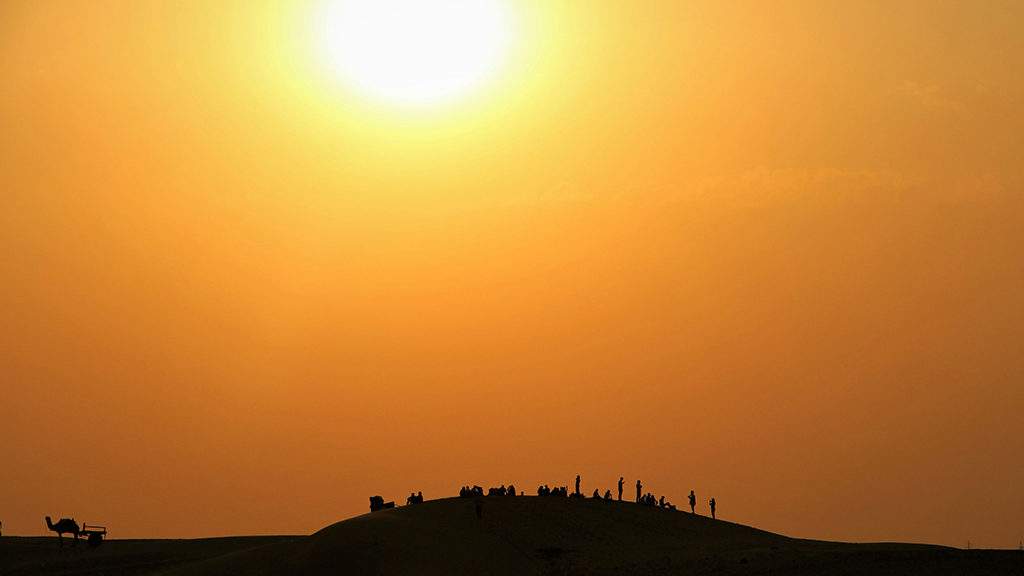A severe heat dome has engulfed large parts of Europe and the Middle East, triggering record-breaking temperatures, wildfires, and widespread disruptions. A stalled high-pressure system has parked over the region, trapping hot air and pushing temperatures to levels well beyond seasonal norms.
France recorded 52 all-time high temperatures in a single day—August 11—with over 175 locations exceeding 40 °C. In southern Spain and Portugal, mid-June brought national records above 46 °C, marking the hottest June ever recorded in both countries. The UK also registered its warmest June on record, while parts of Italy, Croatia, and the Balkans remained 10–12 °C above typical summer averages.
Heat has extended deep into the night. Israel and Jordan saw overnight temperatures exceeding 35 °C, straining health systems and infrastructure. In Sedom, Israel hit a daytime high of 49.7 °C, with heat indexes reaching critical danger levels, particularly in densely built urban zones lacking natural ventilation or cooling access.
Wildfires have erupted across southern Europe. Spain activated military forces to combat 20 major blazes in Galicia, where flames scorched over 115,000 hectares. Thousands were evacuated, and air quality collapsed across several regions. Portugal and Greece face parallel crises, with emergency response stretched and red alerts issued for days.
In response, several governments shut schools, suspended outdoor labor, and redirected public services toward emergency response. Transportation networks also faced disruptions, with temporary closures in high-risk zones.
Climate data models strongly associate this heat dome with amplified global warming effects, and the breadth of its impact signals deeper structural vulnerability across multiple countries. Persistent high-pressure zones now form more frequently and linger longer, suggesting a need for more aggressive adaptation strategies.
Immediate priorities:
Reinforce urban cooling plans through green roofing, tree planting, and albedo-optimized materials.
Expand access to air-conditioned public spaces, especially in low-income neighborhoods and refugee camps.
Upgrade national wildfire response systems with better satellite monitoring and rapid-response units.
Promote heat-resistant crop strains and irrigation systems to protect agricultural output during extreme weather periods.
Speculation flagged: If such systems recur annually, parts of southern Europe and the Levant could face routine summer highs near or above 50 °C, redefining habitability and stressing water, food, and energy systems across the region.









